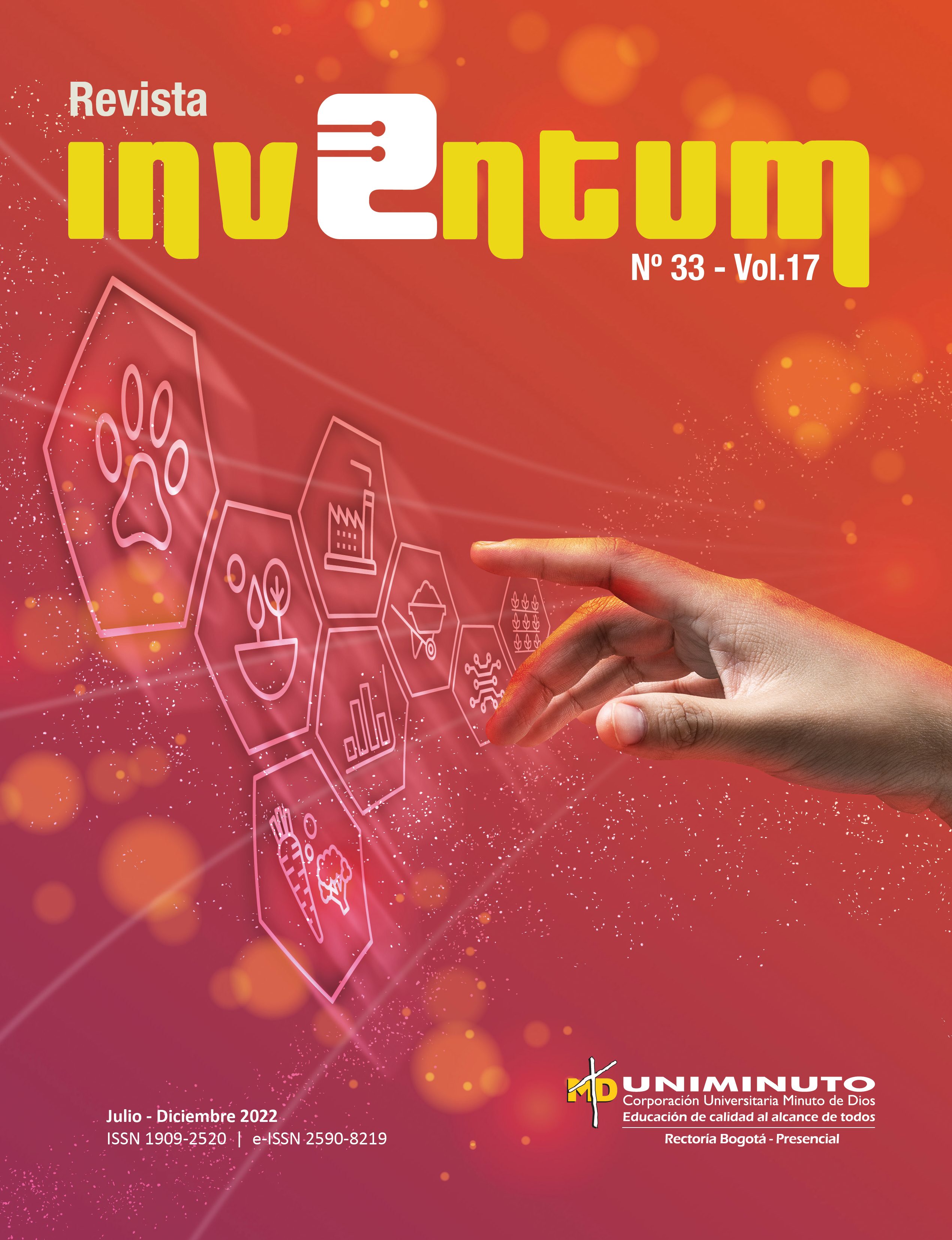Key factors for the success of smart and sustainable cities: A systematic review of the literature
Article Sidebar
How to Cite
Altmetrics
Article Details

This work is licensed under a Creative Commons Attribution 4.0 International License.
Se solicita a los autores que diligencien el documento de cesión de derechos de autor sobre el artículo, para que sea posible su edición, publicación y distribución en cualquier medio y modalidad: medios electrónicos, CD ROM, impresos o cualquier otra forma, con fines exclusivamente científicos, educativos y culturales
- La obra pertenece a UNIMINUTO.
- Dada la naturaleza de UNIMINUTO como Institución de Educación Superior, con un modelo universitario innovador para ofrecer Educación de alta calidad, de fácil acceso, integral y flexible; para formar profesionales altamente competentes, éticamente responsables y líderes de procesos de transformación social, EL CEDENTE ha decidido ceder los derechos patrimoniales de su OBRA, que adelante se detalla para que sea explotado por ésta
- El querer de EL CEDENTE es ceder a título gratuito los derechos patrimoniales de la OBRA a UNIMINUTO con fines académicos.
Main Article Content
Abstract
A smart city incorporates technological tools for the optimization of infrastructure, mobility, environment, and other factors that influence the quality of life. The purpose of this article is to analyze, based on the literature, the key factors for the success of smart cities worldwide focused on sustainable development. Renowned databases in the scientific community were consulted, taking as a premise the research question posed, in order to collect as much information about the object of study and then filtered and analyzed through a meta-analytical matrix with established data of interest. Based on the results of the research, it is inferred that, although the smart city is a relatively new topic, there are enough resources to create them, not only
References
T. Yigitcanlar et al., “Understanding ‘smart cities’: Intertwining development drivers with desired outcomes in a multidimensional framework”, Cities, vol. 81, pp. 145–160, nov., 2018, doi: 10.1016/j.cities.2018.04.003.
A. Ghaffarianhoseini, N. D. Dahlan, U. Berardi, A. Ghaffarianhoseini, N. Makaremi, y M. Ghaffarianhoseini, “Sustainable energy performances of green buildings: A review of current theories, implemen-tations and challenges”, Renew. Sustain. Energy Rev., vol. 25, pp. 1–17, 2013, doi: 10.1016/j.rser.2013.01.010.
M. Tan, “Creating the digital economy: Strategies and perspectives from Singapore”, Int. J. Electron. Commer., vol. 3, n.º 3, pp. 105–122, ago. 1999.
L. Čablová, R. Pates, M. Miovský, y J. Noel, “How to write a systematic review article and meta-analysis”, en, Publishing Addiction Science, T. Babor et al. eds. London: Ubiquity Press., 2017, pp. 173–189, , doi: 10.5334/bbd.i.
S. El Khateeb, “IoT architecture a gateway for smart cities in Arab world”, 2018 15th Learn. Technol. Conf., pp. 153–160, doi: 10.1109/LT.2018.8368500.
J. Macke, R. M. Casagrande, J. A. R. Sarate, y K. A. Silva, “Smart city and quality of life: Citizens’ perception in a Brazilian case study”, J. Clean. Prod., vol. 182, pp. 717–726, may. 2018, doi: 10.1016/j.jclepro.2018.02.078.
E. Ismagilova, L. Hughes, Y. K. Dwivedi, y K. R. Raman, “Smart cities: advances in research—An information systems perspective”, Int. J. Inf. Manage., vol. 47, pp. 88–100, ago. 2019, doi: 10.1016/j.ijinfomgt.2019.01.004.
H. Yeh, “The effects of successful ICT-based smart city services: From citizens’ perspectives”, Gov. Inf. Q., vol. 34, n.º 3, pp. 556–565, sep. 2017, doi: 10.1016/j.giq.2017.05.001.
A. Kramers, J. Wangel, y M. Höjer, “Planning for smart sustainable cities”, en Proc. 2014 Conf. ICT Sustain., ago. 2014, pp. 299–305.
S. Joshi, S. Saxena, T. Godbole, y Shreya, “Developing Smart Cities: An Integrated Framework”, Procedia Comput. Sci., vol. 93, pp. 902–909, sep. 2016, doi: 10.1016/j.procs.2016.07.258.
R. Mahesa, G. Yudoko, y Y. Anggoro, “Platform ecosystems for Indonesia smart cities”, en 2018 Int. Conf. Comput. Control. Informatics its Appl. Recent Challenges Mach. Learn. Comput. Appl. (IC3INA), nov. 20182018 - Proceeding, pp. 34–39, doi: 10.1109/IC3INA.2018.8629537.
United Nations, 2018 “Revision of World Urbani-zation Prospects”, Department of Economic and Social Affairs. [En línea]. Disponible: https://www.un.org/development/desa/publications/2018-revision-of-world-urbanization-prospects.html
The World Bank, “Urban Population, 2021”. The World Bank: Data. [En línea]. Disponible: https://data.worldbank.org/indicator/SP.URB.TOTL?end=2021&start=1960&view=chart
E. Cosgrave, T. Tryfonas, y T. Crick, “The smart city from a public value perspective”, en Proc. 2014 Conf. ICT Sustain., ago. 2014, pp. 369–377, 2014, doi: 10.2991/ict4s-14.2014.45.
M. Gargiulo et al., “An integrated planning fra-mework for the development of sustainable and resilient cities―The case of the InSMART Project”, Procedia Eng., vol. 198, , pp. 444–453, ene. 2017, doi: 10.1016/j.proeng.2017.07.099.
J. Zhang, C. Wang, y X. Chen, “Innovative and smart city: A theoretical study of adaptive solutions for sustainable solar urban districts”, E3S Web Conf., vol. 79, 2019, doi: 10.1051/e3sconf/20197903011.
C. Martin, J. Evans, A. Karvonen, K. Paskaleva, D. Yang, y T. Linjordet, “Smart-sustainability: A new urban fix?”, Sustain. Cities Soc., vol. 45, pp. 640–648, 2019, doi: 10.1016/j.scs.2018.11.028.
V. Marchal et al.,. Environmental Outlook to 2050: Chapter 3: Climate change. OECD, 2011, p. 5.
F. Mosannenzadeh, A. Bisello, R. Vaccaro, V. D’Alonzo, G. W. Hunter, y D. Vettorato, “Smart energy city development: A story told by urban planners”, Cities, vol. 64, pp. 54–65, abr. 2017, doi: 10.1016/j.cities.2017.02.001.
A. Adonina, E. Akhmedova, y A. Kandalova, “Realization of smart city concept through media technology in architecture and urban space: From utopia to reality”, MATEC Web Conf., vol. 170, 2018, doi: 10.1051/matecconf/201817002013.
J. Lloret, S. Sendra, P. L. González, y L. Parra, “An IoT Group-Based Protocol for Smart City Interconnection”, Commun. Comput. Inf. Sci., vol. 978, pp. 164–178, feb. 2019, doi: 10.1007/978-3-030-12804-3_13.
Programa de las Naciones Unidas para el Desarrollo, “Objetivos de Desarrollo Sostenible” Los ODS en Acción. [En línea]. Disponible: https://www.undp.org/es/sustainable-development-goals





